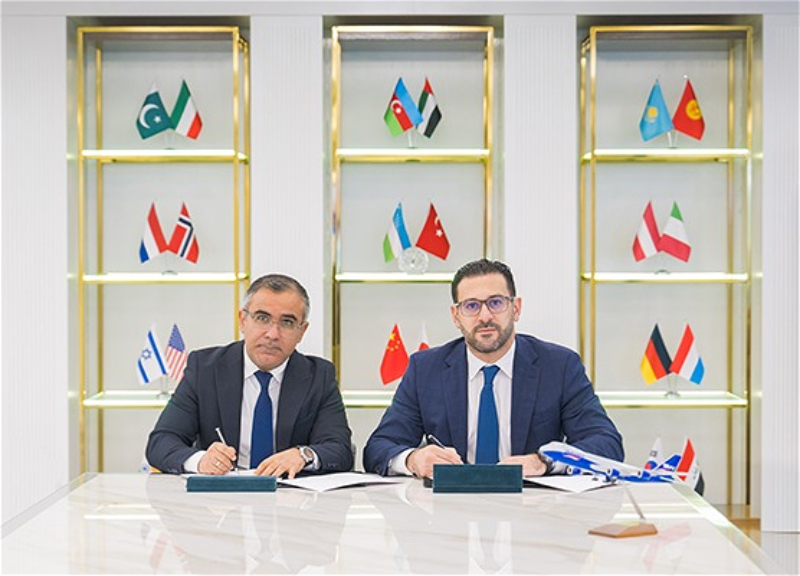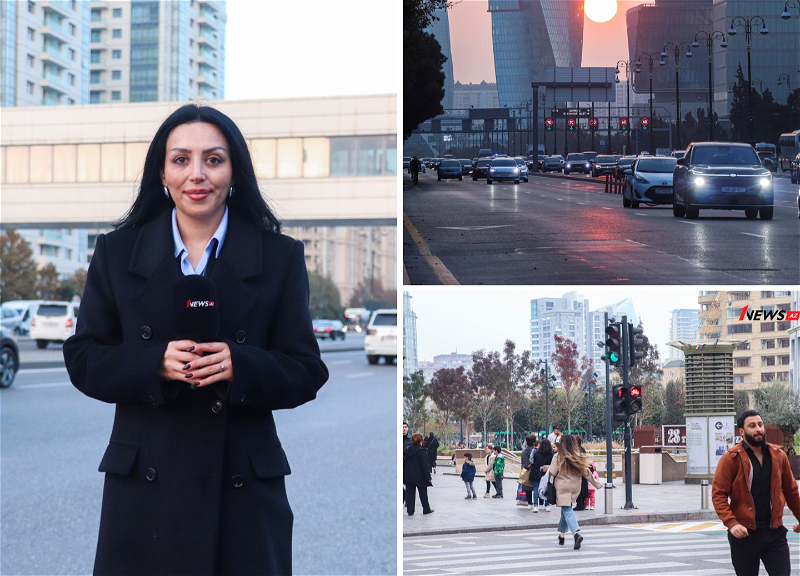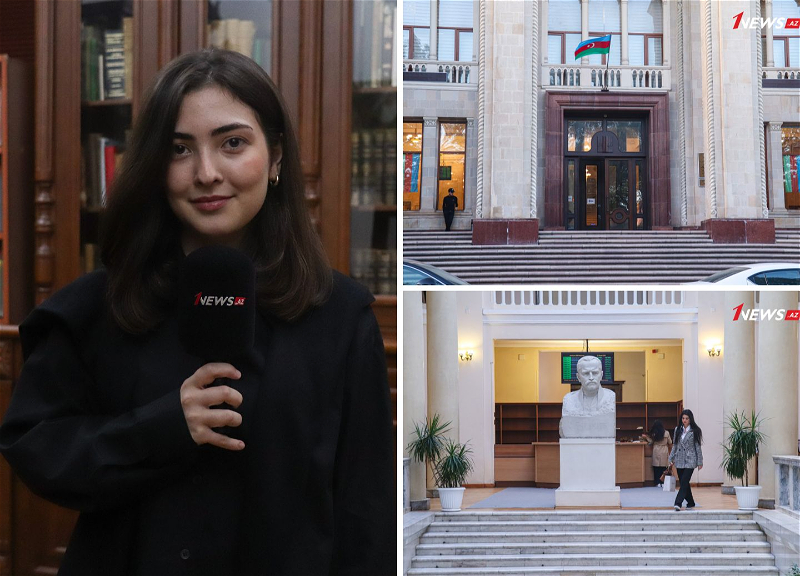The Raucous Caucasus: the US must restore its leverage and credibility in the region

The United States must restore its leverage and credibility in the restive region caught between Russia, Turkey, and Iran.
The news from the Caucasus that reaches the United States these days is mainly bad news. We hear reports of widespread corruption, human rights violations, or clashes between warring nations. In the case of the Russian North Caucasus, jihadi terrorists fight regional governments run by pro-Russian thugs.
Why, then, should such a small sliver of territory, with perhaps 20 million people, deserve treatment in a net assessment survey? The answer is that the importance of the Caucasus has never lain in its numbers or size, but rather in its role as a geographic, cultural, and geopolitical crossroads.
As in the days of the Mongols or Tamerlane, or of the rivalries between the Czarist, Ottoman, and Safavid empires, so today the Caucasus is a meeting point, a bridge or a barrier, between east and west and north and south—between Europe and Asia, and between Russia and the Middle East.
Locked up under Russian rule since the early 19th century, the Caucasus has slowly but surely regained its place on the world scene. That process remains mired in a series of unresolved conflicts between its component nations, which seem increasingly to flare up at the least opportune moment. And given the growing volatility of the surrounding region, these conflicts have increasingly become part and parcel of the great-power politics not only of Russia, Turkey, and Iran, but also of Europe and America.
Despite deep divisions and differences among themselves, the three states of the Caucasus—Armenia, Azerbaijan, and Georgia— all seek close relations with the United States. Indeed, in the 15 and a half years since the September 11 terrorist attacks, these countries have provided a reliable access route to Central Asia and beyond.
Today, the region is sandwiched between several of the key challenges reshaping the European security environment: Russia’s aggressive expansionism, the Islamic radicalism emanating from the Levant, Iran’s ambitious meddling in the Middle East, and the turmoil tearing Turkey apart. Surely, all of this should lead the United States to pay attention to the region, and to develop coherent policies toward it.
Yet in the past decade, the opposite has happened. While the United States had considerable influence in all three states ten years ago, Washington no longer has anything remotely resembling a policy toward the Caucasus as the Obama era gives way to the Trump period. As a result, U.S. interests and desiderata no longer feature prominently in the decision-making of regional leaders.
The results speak for themselves: In 2013, Armenia ditched a draft agreement that would have brought it closer to the West for Vladimir Putin’s Eurasian Union. As for Azerbaijan, the U.S. relationship with the only country bordering both Russia and Iran deteriorated almost to the breaking point in 2015. Even in Georgia, only recently a success story and the darling of U.S. Democrats and Republicans alike, the country’s leader no longer finds it necessary to include tried and trusted pro-Western figures in his electoral coalition.
Simply put, the United States has all but disengaged from the Caucasus. Predictably, nothing in the region has gotten better as a result, and many things are worse. The most obvious example was the large-scale fighting that erupted between Armenia and Azerbaijan in April 2016, leading to several hundred casualties and prompting fears of a new all-out war. Indeed, if the current trajectory is not reversed, no one in Washington should be surprised if events in the Caucasus bring further trouble, affecting the stability of and America’s long-time interests in the broader region.
America’s Strategic Approach, 1991-2007
If the Caucasus can at times appear a hopeless quagmire, a quick look at the situation twenty years ago provides contrast. At the time, the region was coming out of a series of bloody wars that killed thousands and displaced almost two million people. Armenia and Azerbaijan had fought one another to a standstill that left more than a million people homeless and a sixth of Azerbaijan’s territory occupied.
Georgia had lost its autonomous territories of Abkhazia and South Ossetia to Russian-backed secessionists, and was left to deal with a quarter of a million refugees. Both Azerbaijan and Georgia, beset by unruly militias, had seen several governments overthrown with varying degrees of violence. And Russia itself had tried and failed to subdue secessionist Chechnya, losing a war against local rebels in 1996, but not before killing close to 50,000 Chechens. In the mid-1990s, the Caucasus was truly a series of more or less failed states.
But a decade later, after years of malaise, Georgia experienced a peaceful revolution that brought Western-educated reformers to power. They showed that it was actually possible to combat entrenched corruption and effect change in a post-Soviet society. At the same time, Azerbaijan was witnessing an oil boom that, despite the typical problems associated with windfall revenues, greatly reduced poverty and provided the country with a strong regional position from which to assert its independence.
Armenia, despite is largely self-imposed isolation from regional developments, was mildly prosperous and identifying ways to walk a tightrope between its reliance on Russia for security and its European aspirations. The countries in the Caucasus had become real states. (The only exception was the place denied statehood, the North Caucasus.)
This progress was enabled, in great part, by U.S. leadership. Administrations of both parties, with Congress playing an active role, developed a series of policies to help foster prosperous, pro-Western, and gradually democratizing states across the former Soviet space, paying a considerable degree of attention to the Caucasus. Most importantly, the policies were regional in nature: Policymakers viewed the Caucasus in its broader context, in particular Central Asia to its east and the Black Sea basin to its west.
These policies supported the states’ independence and sovereignty, defending their right to choose their own foreign policy orientations. They promoted the development of accountable, democratic institutions and the emergence of free market economies linked with the West. More specifically, U.S. policy actively worked to enable the export of the region’s most valuable resources—its hydrocarbons—to world markets.
The development of the Caspian Sea basin’s energy resources began in earnest in the mid-1990s. The successful development of the oil and gas resources of Azerbaijan, Kazakhstan, and Turkmenistan have proven crucial to the economic and political self-sufficiency of the states of the wider region, providing an independent income stream with which these countries could consolidate their sovereignty. The creation of a pipeline system connecting Azerbaijan’s energy resources to Turkey via Georgia avoided the territory of the former colonial overlord, Russia. While this primarily benefited Azerbaijan, it held great importance for Georgia as well as for the Central Asian states. The diplomatic efforts of the Clinton Administration, along with support from the Export-Import Bank, gave local leaders the courage to embark on a multi-billion dollar project of key strategic importance in the face of Russian objections.
It would be a mistake to assume that U.S. relations with the region focused only on oil. In fact, the Pentagon was the main locus of interest in Central Asia and the Caucasus in the early 1990s; U.S. military planners understood the significance of new states emerging in the heart of Eurasia, an area hitherto closed to the United States.
Their efforts would prove fortuitous: In the aftermath of the terrorist attacks of September 11, 2001, the U.S. military was forced to wage war thousands of miles away from the closest U.S. military bases, thus confronting enormous logistical challenges. The rapid U.S. response, which led to the crippling of the Taliban and al-Qaeda in Afghanistan, was made possible only by the introduction of U.S. military power into Afghanistan via the Caucasus and Central Asia.
A decade later, when the U.S. military expanded troop levels in Afghanistan, the Caucasus corridor ensured that it was not solely dependent upon Northern Distribution Network (NDN) routes across Russia. Given the subsequent deterioration of U.S.-Russian relations, the Caucasus corridor will be crucial to any future Western presence in Afghanistan or Central Asia.
Nor is transport only a military concern: The Caucasus has become a crucial artery in an emerging system of continental trade by land that connects European and Asian markets. Considerable investments have already been made in port facilities in Georgia, Azerbaijan, and Turkmenistan, as well as in railroads across the region. As a result, the stability of the South Caucasus will be a long-term concern not just for major Western oil and gas firms, but also for Chinese and Indian interests in uninterrupted trade between Asia and Europe.
Finally, Georgia’s reformist government stands as an example for countries far afield of how dedicated and determined leadership can defeat entrenched corruption. This reform program—indeed, this escape from state failure—would not have happened had the United States not provided support for the education of thousands of young Georgians at its universities. Nor would it have progressed had Mikheil Saakashvili’s government not been able to count on the United States to run interference when Russian leaders worked overtime to undermine a reform agenda that, Kremlin kleptocrats worried, would endanger their own system of government if allowed to succeed.
Of course, there were areas where the United States did not venture, and areas where it failed. In retrospect, the relative neglect of conflict resolution was regrettable. Washington played an active role only intermittently in resolving the Armenian-Azerbaijani conflict; it did next to nothing, however, to bring an end to Georgia’s secessionist conflicts, in which Moscow was a much more visible spoiler. But even with those caveats, U.S. policies in the Caucasus in the 1990s and early 2000s constitute a resounding success overall.
The Downhill Slide
In retrospect, the tipping point where the region’s political and economic progress gave way to a gradual deterioration was February 11, 2007, when Vladimir Putin delivered his infamous speech in Munich in which he warned against a U.S. “global supremacy.” Indeed, it was in the Caucasus, before anywhere else, that Putin—sensing that the Iraq War had weakened the United States—began to push back against U.S. interests. Since then, a series of Russian actions, U.S. choices, and responses by regional states have combined to making the Caucasus distinctly more volatile than it was before that speech.
The most direct factor was, of course, the Russian invasion of Georgia in August 2008. That invasion changed everyone’s calculations of Russia’s intentions and determination, but also changed perceptions of the utility of a Western orientation. Until then, Azerbaijan and Georgia had bet on an implicit Western deterrence of Russia, buying into the widely held illusion that wars in Europe were a thing of the past.
When Russia called that bluff, it exposed the West’s unwillingness to challenge Moscow’s primacy in the post-Soviet space with anything beyond words. European sanctions lasted only a few months, and the incoming Obama Administration even rewarded Russia with the ill-fated “reset” policy, which Moscow took as an unspoken admission of U.S. weakness.
Only six weeks after the Georgia war came the Western financial crisis, which rocked the foundations of the world economy and prompted both the United States and Europe to look increasingly inward. This further eroded the credibility of the West and became an important reason for its growing disengagement from the security affairs of the Caucasus. More broadly, the Caucasus was another victim of the general disengagement from the Middle East and Eastern Europe that President Obama admitted was part of his long-term strategy.
The war in Georgia and the financial crisis were a double whammy that fundamentally altered the balance of power in the Caucasus to the detriment of the West. In the years that followed, important but not always visible changes took place in each of the region’s countries.
Armenia had long tried to balance its reliance on Russia for security with its hopes of growing closer to the West. It had accepted a Russian security umbrella to safeguard its conquest of Nagorno-Karabakh, but that conquest left the country’s economy devastated. As a result, Armenia accumulated a huge debt to Russia, which Moscow was more than happy to forgive in exchange for controlling stakes in the strategic assets of Armenia’s economy.
All the while, Yerevan sought to develop what positive relations it could with the United States and Europe. But its membership in the Collective Security Treaty Organization made a closer relationship with NATO impossible, so Armenia focused on the European Union. In 2010, it began to negotiate an Association Agreement, including a Deep and Comprehensive Free Trade Agreement (DCFTA). But when Moscow soured on the European Union, Yerevan’s policy became untenable. In September 2013, President Serzh Sargsyan announced that Armenia would jettison the EU agreement for membership in the Eurasian Economic Union.
The circumstances of the decision raised eyebrows. Sargsyan spoke in Moscow, following a meeting with Putin; he had consulted neither his government nor his parliament. Similarly, Putin had not deigned to consult with the leaders of Belarus and Kazakhstan, the other members of the EEU. While this says much about the nature of the Eurasian Union, it also cemented Armenia’s submission to Moscow.
That submission didn’t have the expected benefits, however: When major fighting broke out in April 2016 between Armenia and Azerbaijan, rather than coming to Armenia’s defense, Moscow assumed a rather neutral stance. This infuriated many Armenians, who came to re-evaluate twenty years of policy choices.
As for Azerbaijan, high oil prices helped the country do well until oil tanked in 2014. Yet even before that, warning clouds gathered on the horizon. The Georgia war came as a deep shock to Baku, which relies almost entirely on Georgia for its export of oil and gas to Europe. The Azerbaijani leadership understood that if the United States would not or could not protect Georgia, the posterchild of reform in the region, then Azerbaijan was thoroughly on its own. That also meant that the incentive for internal reform—the prospect of closer ties to the West—dissipated.
To make matters worse, Azerbaijan felt that Western countries entirely ignored the issues that mattered to it: security, energy politics, and most importantly the Nagorno-Karabakh conflict. Meanwhile, Moscow employed both sticks and carrots to “flip” the country. As a result, Baku recalibrated: While it did not jump on the Russian bandwagon, it began to eschew visibly pro-Western positions. Even so, Moscow tried to interfere directly with the presidential election in 2013. This, and suspicions of U.S. support for “regime change,” led the leadership to tighten control over both the bureaucracy and civil society, which in turn led to growing tension in the U.S.-Azerbaijani relationship.
Georgia, meanwhile, experienced something unusual in 2012: a peaceful and democratic transfer of power. And while that transfer did not bring an overt change in Georgian foreign policy, it led to a gradual decline in U.S. influence. Unlike the leaders of the Rose Revolution, the country’s new strongman, business tycoon Bidzina Ivanishvili, was thoroughly shaped by the Soviet experience and his business career in Moscow in the 1990s. His governing coalition included both reliable pro-Western forces and outright anti-American groups.
Ivanshvili made it clear that he would not let Western opinion guide his actions. He resigned from politics in late 2013, but continues to decide key matters from the shadows. Between 2014 and 2016, he gradually discharged the two main pro-Western political groups from his coalition: first the Free Democrat Party, and then the Republican Party. Georgia’s de facto leader clearly thinks such figures are expendable; meanwhile, anti-Western groups funded by Moscow are instilling doubt among the Georgian population regarding the country’s Western orientation.
And who can blame them for doubting? When Ivanishvili came to power and began jailing former officials on generally flimsy charges, Brussels mounted a stronger critique than did Washington. The Obama Administration continued to its end to deny Georgia the right to buy defensive weaponry. NATO refuses to take more than cosmetic steps to support Georgia’s security. And the EU won’t implement visa-free travel for Georgians even though the country fulfilled all conditions for it. Under the circumstances, it should come as no surprise if, in the next few years, Georgia also moves into a non-aligned position between Russia and the West.
The increasing volatility of the region has led Armenian and Azerbaijani leaders to ratchet up the Nagorno-Karabakh conflict, which has seen an almost linear escalation of hostilities between 2008 and 2016. While the chief logic of the conflict remains local, it has also become an instrument of pressure for those foreign forces—primarily Russia but also Iran—that seek to prevent the West from gaining ground in the Caucasus and developing the east-west artery of communications.
Simply put, the stakes have been raised: While Armenia and Azerbaijan are the main protagonists in the conflict, the international politics are no longer mainly, or even perhaps primarily, about them. It now involves the major powers with interests in the region, all of which have a considerable ability to torpedo any resolution they do not like. Take only the past year or two as an example: When Turkey and Russia clashed over Syria in 2015, the Armenia-Azerbaijan conflict began to acquire elements of a proxy war between the two powers. When Moscow and Ankara made up in the summer of 2016, much confusion beset both Yerevan and Baku, who were no longer sure how great power politics affected their interests, and their conflict. Meanwhile, the U.S. stance on all this was difficult to identify, and Washington became progressively less relevant to the protagonists. Adding insult to injury, Washington allowed Russian Foreign Minister Sergey Lavrov to take the lead in the peace process, something worse than letting loose a fox in the henhouse.
First the Caucasus countries became caught in the middle of a new contest between Russia and the West in Ukraine; then, on top of that, they found their geopolitics interwoven with those of the Middle East. Only a few hundred miles southwest of the Caucasus as a Russian cruise missile flies, the three major powers that surround the South Caucasus have gotten involved on different sides of the Syrian civil war. This cannot help but affect the region, and it has acted as an accelerant on unresolved local conflicts.
Of course, the transformation of Turkey also made matters worse. In the 1990s, Turkey had been a key U.S. partner in the Caucasus, but this essentially ended with the controversy over the Iraq invasion in March 2003. Recep Tayyip Erdoğan has presided over an increasingly authoritarian and Islamist Turkey embarked on a fanciful mission to establish itself as a leading force in Middle East politics. As it happened, events in Syria, Iraq, and Egypt favored Turkey’s antagonists, dashing Ankara’s pretensions. Turkey’s internal volatility, exhibited in the failed coup attempt in 2016, has rendered the country yet another source of instability for the Caucasus.
Meanwhile, the West’s rapprochement with Iran has proved equally troublesome. One of the main attractions of the Caucasus, from a U.S. perspective, had been its role as a pro-Western bastion on Iran’s doorstep. What would a U.S.-Iranian rapprochement, seemingly signaled by the nuclear deal, mean for the region? A further decrease of U.S. interest in the Caucasus.
The Role of U.S. Policy
Just as the successes of the Caucasus in the 1990s and 2000s could be partially credited to U.S. policies, so the decline of the region in the past decade is inextricably tied with changes in the U.S. global posture, most particularly during the Obama era. This had nothing to do with a paucity of resources caused by U.S. domestic economic difficulties.
America’s impact in the Caucasus is not a function of the resources it expends, but of whether or not it develops and implements a coherent strategy for the region and pays adequate attention to its own interests. In other words, U.S. policy toward the Caucasus has suffered from flaws both analytic and strategic in character, all of which are rectifiable.
First, it is increasingly obvious that the U.S. government does not have a regional policy toward the Caucasus. The Obama Administration did not spend much time thinking of the region in any broader context, be it post-Soviet or Middle Eastern; it is too early to tell whether the Trump Administration will do so.
The Obama Administration was remarkably focused on “big issues” and “big states,” as one State Department Policy Planning official put it to me in 2009. In practice, this meant a departure from the past twenty years of bipartisan policy toward the Caucasus and Central Asia, in which these regions were viewed as regions—at least until the war in Afghanistan gradually transformed them into mere instruments of military policy.
With the Obama Administration, any pretense of a regional approach disappeared. High-level attention to the Caucasus was entirely absent, making the region an excellent example of what happens when the U.S. bureaucracy is left to implement policies without guidance and coordination. In an exception to the rule, the attempt to promote Turkish-Armenian normalization did have support at the highest levels, but the lack of regional approach proved fatal to it as well: It was run by White House officials concerned mainly with domestic politics, who ignored the regional context of the Turkish-Armenian relationship. That relationship was inseparable from the Armenian-Azerbaijani conflict, a link the Administration first tried to ignore, and then sever. This left all participants in a worse position than before the initiative began.
It is only a slight exaggeration to say that all countries in the Caucasus became appended to some larger and separate context during the Obama period. Armenia became an appendix to Turkey policy, and Georgia an appendix to Russia policy. As for Azerbaijan, depending on which branch of the U.S. government was concerned, it was viewed either as a human rights problem or a transit corridor to Afghanistan. In the absence of leadership, these competing views were never reconciled, contributing to the gradual deterioration of U.S.-Azerbaijan relations from 2010 to 2015.
Indeed, no diplomatic development in the Caucasus is more striking and unsettling than the downward spiral of the U.S.-Azerbaijani relationship. What was once a functioning strategic partnership has become bitter and acrimonious. Azerbaijan bears partial responsibility for this, but the Obama Administration bears more.
The proximate cause for the deterioration was Azerbaijan’s domestic rights record, but the Obama Administration evaluated that record without acknowledging the link between Azerbaijan’s domestic actions and its security situation, notably mounting Russian pressure, the Armenian-Azerbaijani conflict, and Russia’s manipulation of that conflict. It also failed to factor in significant domestic rivalries within Azerbaijan.
The decline of U.S.-Azerbaijani relations also illustrates a second key problem of U.S. policy: the inability to coordinate diverse areas of interest. Thanks to the Freedom Support Act of 1992, U.S. relations with the former Soviet states largely retain the logic of the 1975 Helsinki Final Act. That agreement regulated relations between the West and Soviet Union, compartmentalizing them into politics and security, economy and trade, and normative issues including human rights.
A functioning balance between the areas of interest existed in the late 1990s and early 2000s. The exploitation of energy resources ensured that both the private sector and the Departments of Energy and Commerce had a stake in the relationship. Counter-terrorism issues and the war in Afghanistan involved both the Pentagon and the Treasury, while the NGO community and the State Department’s Bureau of Democracy, Human Rights, and Labor kept the human rights issues on the table.
But after the major pipeline infrastructure was built and the war in Afghanistan retreated from center stage, the human rights advocates by default became the agenda-setters both inside and outside of government. Their preeminence is a cautionary tale: The more U.S. policy became focused on human rights, the worse the situation in Azerbaijan got.
The lesson is clear: The United States can only be successful in promoting human rights if it engages with the key areas that matter to the countries in question. In the post-Soviet space in particular, U.S. policymakers too often fail to understand the intricate relationship between security and democratization. U.S. leaders have urged the liberalization of political systems, arguing that such steps would improve security and sovereignty. Yet they have refused to take concrete steps to back the security of states that face threats to their sovereignty, steps that could have made the leaders more amenable to domestic reform. This conundrum has been present everywhere, including in Saakashvili’s Georgia, where every threat from Russia met with a U.S. recommendation to speed up the processes of political liberalization—even though those made Georgia more vulnerable to Russian hybrid warfare in the short term.
Policy Options for the Trump Administration
Will the Trump Administration care about all this? A month or two ago, prevailing fears of a U.S. embrace of Moscow might have made the entire discussion seem redundant. But the Administration appears to be coming to terms with the reality that the leadership in Moscow aims to undermine American interests around the world. Conversely, Moscow seems to be losing hope for a new “reset,” and it may decide to test the Trump Administration’s resolve more seriously. Such a test may very well occur in the Caucasus, where it could accomplish much at little cost.
It is therefore important for the new U.S. decision-makers to develop a rudimentary strategy for the Caucasus. Here are a few simple implications from the discussion above:
First, all policies toward the Caucasus must be rooted in a regional rather than a bilateral approach. The implementation of policy will differ from country to country, but the strategy behind the policies must be one and the same.
Second, policymakers must coordinate their actions. In other words, they must reconcile the various areas of interest detailed above, to maximize positive interactions and minimize potential contradictions.
Thus, U.S. policymakers should pay greater attention to issues of sovereignty, conflict management, and security. Unless these are attended to, the likelihood of progress in other areas will remain slim. But the achievement of mutual understanding on security issues with regional states will do more than anything else to pave the way for progress in other areas.
U.S. diplomats must go back to their earlier practice of reiterating at every occasion U.S. support for the independence and territorial integrity of the region’s states. But verbal statements are not enough: The United States will need to push back more strongly against Russia’s continuous provocations along the ceasefire lines in Georgia. The clearest signals Washington can send are the sale of defensive weapons to Georgia and close engagement with Tbilisi on security matters.
The Administration will also need to develop a substantial, long-term initiative to manage and eventually resolve the Armenian-Azerbaijani conflict. Unlike during the Obama years, Washington must no longer allow the Russians to dominate this process, and must expand the U.S. role in the OSCE Minsk Group. If that generates Russian objections, the Administration must even be prepared to go beyond this format.
The Obama Administration’s approach to democratization and human rights manifestly did not work. It failed to learn the lesson of Georgia’s Rose Revolution, namely that democratic progress is only possible if there is adequate governance.
Thus, U.S. efforts in future should emphasize concrete matters of good governance: the improvement of the capabilities and accountability of government offices serving citizens’ needs, and the reduction of corruption and mismanagement. In all this, the U.S. government should coordinate with governments rather than work against them.
In revising U.S. policy toward the Caucasus, policymakers will need to take stock of regional realities and be realistic about the extent of U.S. influence. As a result of both Western mistakes and changing perceptions of the global balance of power, U.S. leverage and even credibility in the Caucasus is lower today than at any time since the countries’ independence.
Policymakers must recognize the need for substantial investments of time and political attention, but not necessarily of financial resources, to change perceptions of the West. If it makes such a commitment, Western leverage can be expected to rise in this small but nevertheless important region, bearing implications for America’s posture in the Middle East, Central Asia, and Eastern Europe as well.
Svante E. Cornell is the director of the American Foreign Policy’s Central Asia-Caucasus Institute, and co-founder of the Institute for Security and Development Policy in Stockholm.














